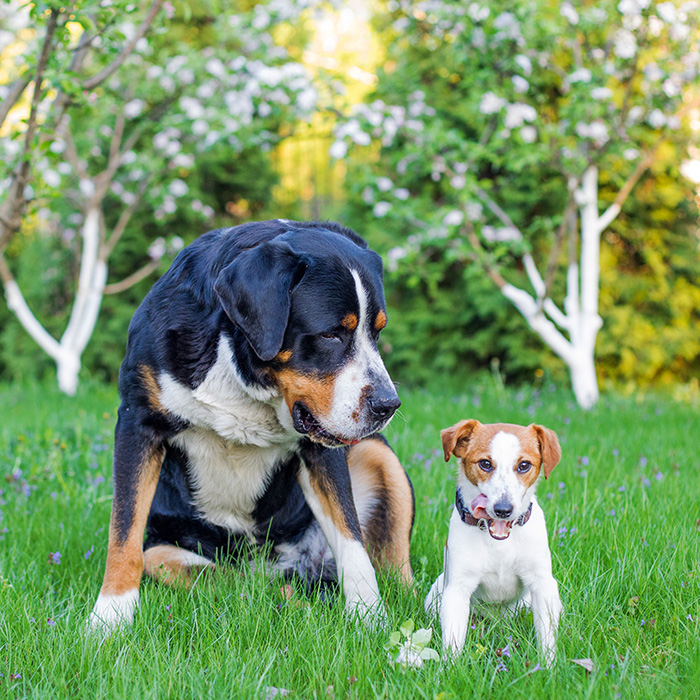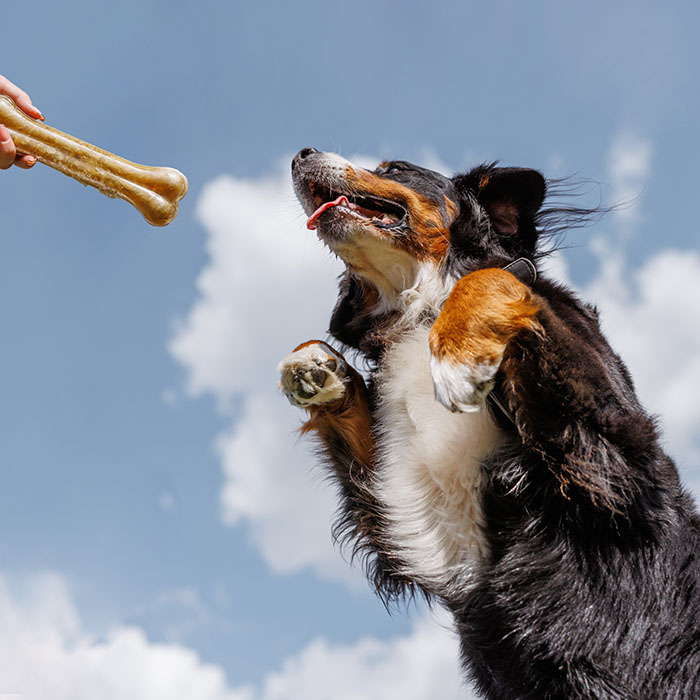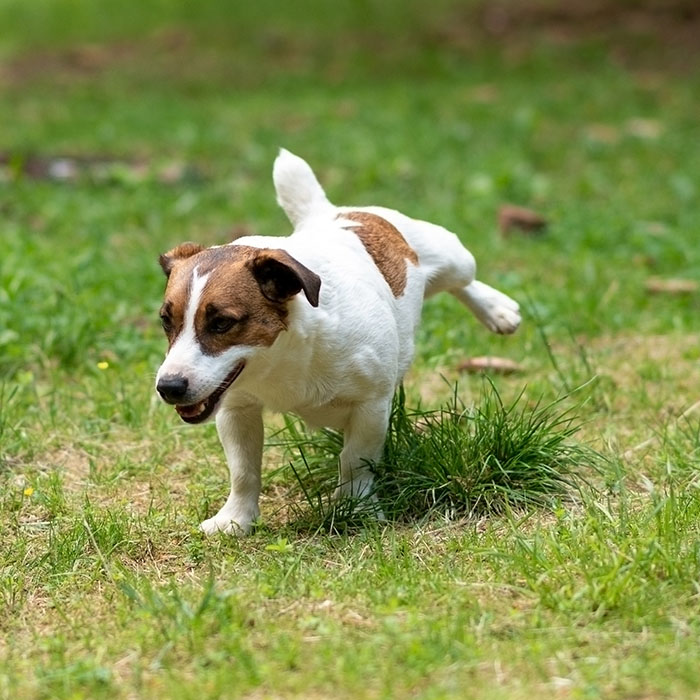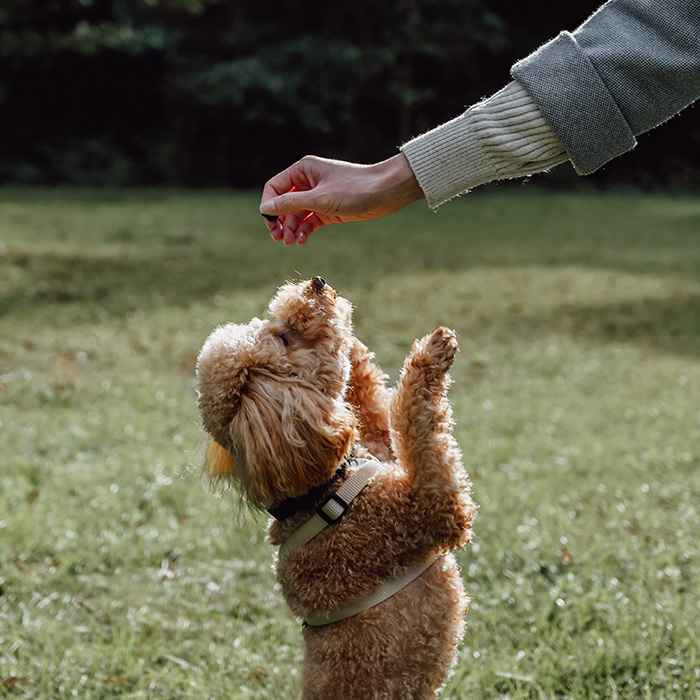What Else We Can Help With
Private Training Sessions
Our private training sessions are designed to provide focused, one-on-one attention to address your dog’s unique needs and challenges.
Obedience Training
Teach your dog essential obedience training, like responding reliably to commands such as sit, stay, heel, and come.
Socialization & Real-World Exposure
Our sessions focus on socialization and real-world exposure to boost your dog’s confidence in public spaces, around other dogs, and with various distractions.
Behavior Modification

Understanding Your Dog’s Potty Needs
Before starting your potty training routine, it’s important to understand your dog’s needs. Just like people, dogs have specific times when they need to go to the bathroom. Recognizing these signs will help make potty training easier and less stressful for both you and your dog.
- Puppies: Puppies have smaller bladders and need to go outside more often. As a rule, puppies can hold their bladder for about one hour per month of age. For example, a 3-month-old puppy will need a bathroom break every 3 hours. They also need to go outside after eating, playing, or napping.
- Adult Dogs: Adult dogs can typically hold their bladder longer (about 4–6 hours), but they still need regular bathroom breaks. Older dogs, or those with health issues, might need more frequent breaks.
Steps to Build a Potty Training Routine
Creating a consistent potty training routine is essential for success. Here’s how you can build a potty training routine for dogs that works:
- Set a Potty Schedule: A routine is key! Take your dog outside at the same times each day—like after waking up, after meals, and before bed. This helps your dog know when to expect potty breaks.
- Use a Crate: Crate training is a great tool for potty training. Dogs avoid soiling their living space, so a crate can help them hold it until they’re let outside. Just make sure the crate isn’t too big—your dog should only have enough space to stand up and turn around, not enough room to use part of it as a bathroom.
- Positive Reinforcement: When your dog goes potty outside, reward them with praise, treats, or playtime. Positive reinforcement makes your dog understand that going potty outside equals something good.
- Be Consistent: Consistency is critical! Stick to your routine, and make sure everyone in your household follows the same potty training rules. Inconsistency can confuse your dog and slow down their progress.
- Watch for Signs: Dogs give off signals when they need to go, like sniffing the ground, whining, or circling. Learn to recognize these signs so you can get them outside before they have an accident.
- Clean Up Accidents Properly: If your dog has an accident, clean it up with an enzymatic cleaner. This eliminates the smell and helps prevent your dog from returning to the same spot.


Common Challenges in Potty Training
Potty training isn’t always easy, and there are a few challenges you might face:
- Accidents in the House: It’s normal for dogs to have accidents while they’re learning. With consistency, these will become less frequent.
- Inconsistent Behavior: If your routine isn’t consistent, your dog might get confused. Make sure everyone in your home follows the same rules.
- Separation Anxiety: Some dogs with separation anxiety might have potty accidents when left alone. Crate training or using puppy pads can help.
- Marking Territory: Some dogs mark their territory indoors, especially if they haven’t been spayed or neutered. This might require extra training or professional help.
- Health Issues: If your dog starts having accidents after being potty trained, it could be a sign of a health issue. Contact your vet for advice.
Tips for Success
Here are some helpful dog potty training tips that will ensure a smooth training process:
- Stay Calm and Patient: Potty training can take time, so be patient. Consistency is important, even if your dog has setbacks.
- Limit Freedom Inside: Until your dog is fully potty trained, limit their freedom inside. Keep them in one room or on a leash when you can’t supervise them.
- Establish a Routine Early: Start your puppy potty training schedule as soon as you bring your puppy home. The earlier you start, the easier it will be.
- Use Positive Reinforcement: Praise your dog right after they go potty outside. This helps them learn that going potty outside is a good thing.
- Don’t Punish Accidents: If your dog has an accident, don’t punish them. This only confuses them and makes the training harder.

Potty Training for Puppies vs. Adult Dogs
Signs Your Dog is Potty Trained
So, how do you know when your dog is fully potty trained? Here are a few signs:
No accidents indoors
Follow the routine
Goes potty right away
Why Choose Freedom K9 for Potty Training & Daily Routine?
At Freedom K9 for dog training, we specialize in making potty training easy and effective for dogs of all ages. Our experienced trainers help you establish a reliable potty training routine and guide you through every step of the process. Here’s why you should choose us for your dog’s potty training and daily routine needs:
Experienced Trainers
Personalized Plans
Puppy & Adult Training
Step-by-Step Guidance
Reliable Results
Contact Us
Ready to get your dog on track with their potty training routine? Contact Freedom K9 today to schedule a consultation. Our expert trainers will guide you through every step to make potty training easier for both you and your dog!
FAQs for Potty Training & Daily Routine
How often should I take my puppy outside to potty?
What should I do if my dog has an accident inside?
Can crate training help with potty training?
How long does potty training take?
How do I know if my dog is potty trained?
them out.
